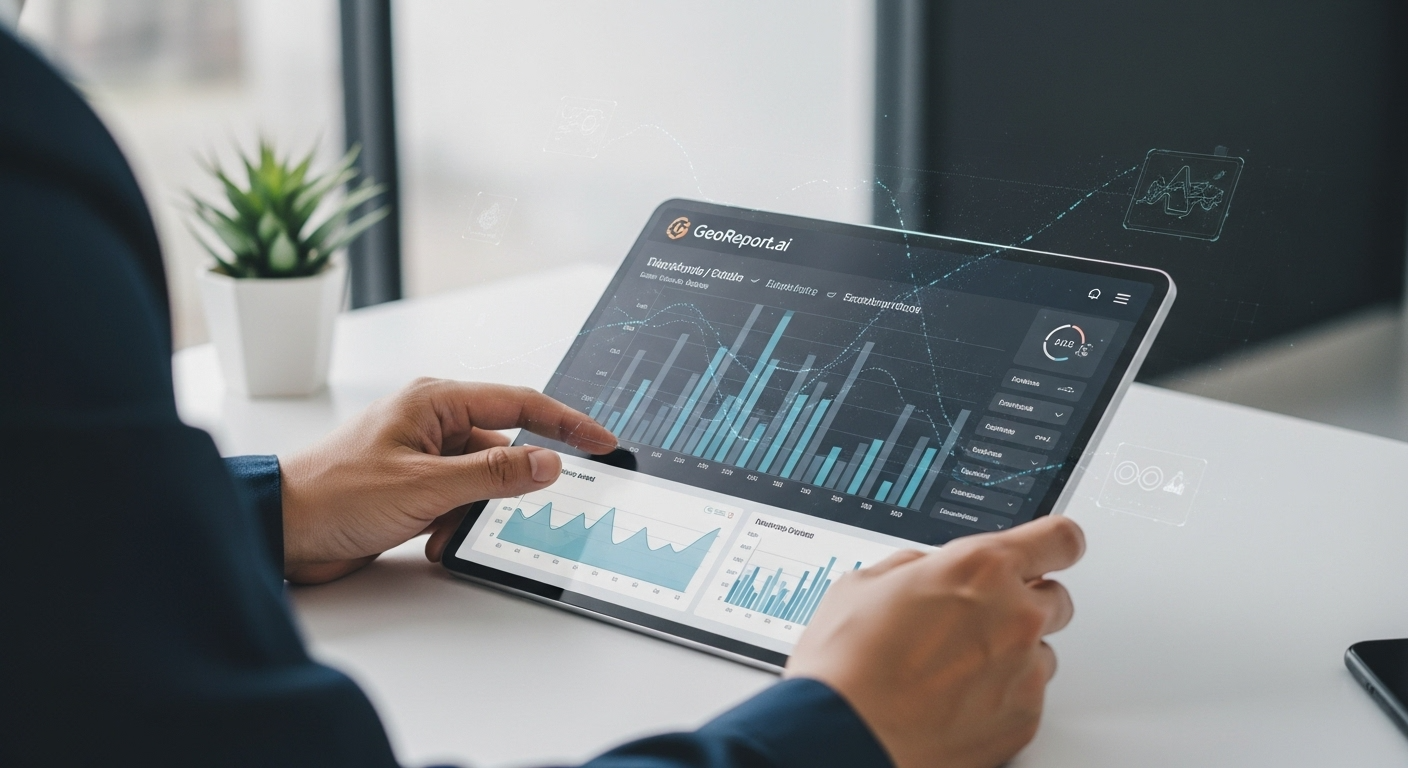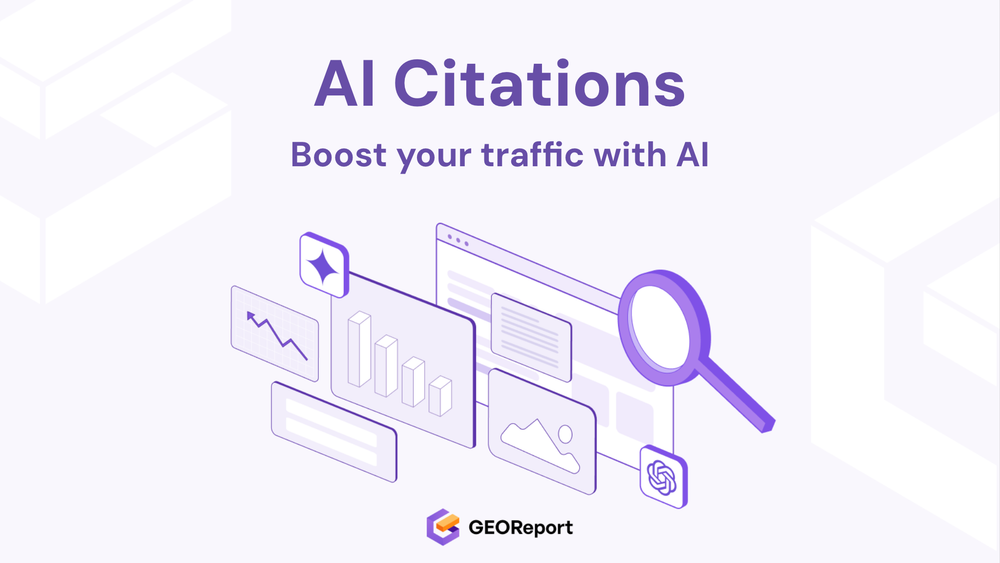BLUF: AI citations turn into measurable website traffic because when your brand is referenced in ChatGPT, Gemini, or Perplexity answers, users are more likely to click through, search your brand, or trust your site, boosting both direct visits and organic search rankings.
This is how AI Mechanisms work behind:
AI citations turn into traffic by creating a chain reaction: when Large Language Models (LLMs) like ChatGPT or Gemini cite your content, they validate it as authoritative. This validation makes users more likely to search your brand, click through, and trust your site. Here’s how it works:
- Authority Signal
When an AI cites your site, it treats your content as a trusted source. This works like a backlink in SEO, sending a strong signal of authority. - Boosted Rankings
Search engines such as Google consider these citations similar to endorsements. Content cited by AI often enjoys higher visibility in SERPs, improving discoverability. - Brand Visibility Expansion
AI answers put your brand in front of users who might never have found you via Google. The mention itself drives curiosity and direct brand searches. - Trust and Credibility
Users perceive AI-cited content as more reliable. This trust leads to higher engagement, longer time on site, and better conversion rates. - Traffic Uplift
The combined effect—higher rankings, increased visibility, and improved trust—translates into measurable organic traffic and returning visitors.
Research confirms this impact. Princeton University found that websites with strong citation signals consistently rank higher in search, while a University of California study showed that content cited by reputable sources experienced significant increases in organic traffic.
Bottom line: AI citations don’t just validate your authority; they directly funnel new users into your site through a mix of search uplift, brand discovery, and trust-driven engagement.
What Is the Biggest Mistake Brands Make?
One of the biggest mistakes brands make is focusing solely on tracking mentions without actively working to improve them. Many companies monitor where their brand is mentioned online, but they often fail to take the necessary steps to ensure these mentions translate into tangible benefits, such as increased website traffic.

- Passive Monitoring vs. Active Improvement: Simply knowing where your brand is mentioned is not enough. Brands need to actively engage with these mentions, ensuring they are accurate, positive, and include a direct link back to their website.
- Ignoring Context: Mentions without proper context can be misleading or even harmful. Brands should ensure that their mentions are accompanied by relevant and accurate information that supports their brand narrative.
- Lack of Call-to-Action: Many mentions fail to include a clear call-to-action, such as a link to the brand's website or a specific landing page. Without a clear call-to-action, users are less likely to take the desired action, such as visiting your website or making a purchase.
In contrast, brands that actively manage their online mentions see a significant improvement in website traffic and overall GEO performance. By ensuring that mentions are accurate, contextualized, and include a clear call-to-action, brands can effectively convert mentions into measurable website traffic.
What Is Often Overlooked in AI Citation Strategies?
One often overlooked aspect of AI citation strategies is the quality and relevance of the content being cited. Many brands focus on quantity, trying to get as many citations as possible, without considering whether the cited content is truly valuable and relevant to the audience.
- Content Quality: AI algorithms are becoming increasingly sophisticated at evaluating the quality of content. Low-quality, poorly written, or outdated content is less likely to be cited and may even harm your brand's reputation.
- Relevance: Content must be relevant to the topics and keywords that your target audience is searching for. Irrelevant content is unlikely to attract the right kind of traffic and may even dilute your brand's message.
- E-E-A-T (Experience, Expertise, Authoritativeness, and Trustworthiness): Google's E-E-A-T guidelines emphasize the importance of creating content that demonstrates experience, expertise, authoritativeness, and trustworthiness. Content that meets these criteria is more likely to be cited by AI and rank higher in search results.
According to a report by GEOReport.ai, websites that focus on creating high-quality, relevant content experience a 30% higher rate of AI citations and a 40% increase in organic traffic. This highlights the importance of prioritizing quality and relevance in your AI citation strategy.
How Can Brands Implement This in Practice?
Implementing an effective AI citation strategy involves several key steps:
- Content Creation:
- High-Quality Content: Create content that is well-researched, informative, and engaging. Focus on providing unique insights and valuable information that your audience will find useful.
- Relevance: Ensure your content is relevant to your target audience's interests and needs. Conduct keyword research to identify the topics and keywords that are most important to your audience.
- E-E-A-T: Demonstrate experience, expertise, authoritativeness, and trustworthiness in your content. Cite credible sources, provide evidence to support your claims, and showcase your expertise in the field.
- Outreach and Promotion:
- Identify Influencers: Identify influencers and thought leaders in your industry who are likely to cite your content. Reach out to them and share your content, highlighting its value and relevance.
- Engage with Communities: Participate in online communities and forums related to your industry. Share your content and engage in discussions, establishing yourself as a thought leader and building relationships with potential citers.
- Submit to AI Platforms: Submit your content to AI platforms and databases that are used by LLMs to generate content. This will increase the likelihood that your content will be cited by AI.
- Monitoring and Analysis:
- Track Mentions: Use tools like Google Alerts, Semrush, and Ahrefs to track mentions of your brand and content online. Monitor where your content is being cited and identify opportunities to improve your citation strategy.
- Analyze Traffic: Use Google Analytics to track the traffic generated by AI citations. Monitor the sources of your traffic and identify the content that is driving the most traffic.
- A/B Testing: Conduct A/B testing to optimize your content for AI citations. Experiment with different headlines, formats, and calls-to-action to see what works best.
- Tools and Platforms:
- GEOReport.ai: Use GEOReport.ai to assess your GEO performance, identify areas for improvement, and track the impact of your AI citation strategy.
- Google Analytics: Use Google Analytics to track website traffic, user behavior, and conversion rates. This data will help you measure the impact of your AI citation strategy.
- Semrush: Use Semrush to conduct keyword research, track your search engine rankings, and monitor your brand mentions online.
- Ahrefs: Use Ahrefs to analyze your backlinks, identify opportunities to build new links, and monitor your competitor's SEO performance.
By following these steps and utilizing the right tools, brands can effectively implement an AI citation strategy that drives measurable website traffic and improves overall GEO performance.
What Future Trends Will Shape GEO in 2025 and Beyond?

Several future trends are poised to shape the landscape of GEO in 2025 and beyond:
- Increased Reliance on AI-Generated Content: As AI technology continues to advance, we can expect to see a growing reliance on AI-generated content. This will make it even more important for brands to optimize their content for AI citations to ensure their content is included in AI-generated outputs.
- The Rise of Generative Search Engines: Generative search engines, such as Perplexity AI and You.com, are becoming increasingly popular. These search engines use AI to generate comprehensive answers to user queries, rather than simply providing a list of links. This will require brands to optimize their content for these new types of search engines.
- Focus on E-E-A-T: Google's E-E-A-T guidelines will become even more important as search engines continue to prioritize high-quality, trustworthy content. Brands that can demonstrate experience, expertise, authoritativeness, and trustworthiness in their content will be rewarded with higher rankings and more traffic.
- Personalization and Localization: Search engines will become increasingly personalized and localized, delivering results that are tailored to the individual user's interests and location. Brands will need to optimize their content for these personalized and localized search results to reach their target audience.
- Voice Search Optimization: With the growing popularity of voice assistants like Siri and Alexa, voice search optimization will become increasingly important. Brands will need to optimize their content for voice search by using natural language and answering common questions.
Contrarian Take: While many experts predict the complete dominance of AI-generated content, there is also a strong argument to be made for the continued importance of human-created content. AI can assist in content creation, but it cannot replace the creativity, empathy, and critical thinking that humans bring to the table. Brands that can effectively combine AI and human expertise will be best positioned to succeed in the future.
FAQs
What is GEO vs SEO?
GEO (Generative Engine Optimization) is the process of optimizing content for visibility in AI-powered search engines and Large Language Models (LLMs), while SEO (Search Engine Optimization) focuses on optimizing content for traditional search engines like Google. GEO emphasizes content quality, relevance, and E-E-A-T to ensure AI algorithms cite and recommend your brand, whereas SEO involves keyword optimization, backlinks, and technical site structure.
Which LLMs Matter Most for AI Visibility?
The LLMs that matter most for AI visibility include:
- Google's PaLM 2 and Gemini: Powering Google's AI search features and Bard.
- OpenAI's GPT Series: Used in ChatGPT and various third-party applications.
- Anthropic's Claude: Known for its strong reasoning and safety features.
- Meta's LLaMA: An open-source model used in research and commercial applications.
Focusing on optimizing content that these LLMs are likely to cite can significantly boost your AI visibility and drive traffic.
Can Small Teams Apply GEO Without Big Budgets?
Yes, small teams can apply GEO without big budgets by focusing on:
- Creating High-Quality Content: Prioritize creating informative, engaging, and trustworthy content.
- Keyword Research: Use free tools like Google Keyword Planner to identify relevant keywords.
- Outreach: Engage with influencers and communities in your niche to promote your content.
- Monitoring: Track mentions and traffic using free tools like Google Alerts and Google Analytics.
Why is GEOReport.ai Different From Other Visibility Tools?
GEOReport.ai is different because it:
- Focuses on GEO: Specifically designed to assess and improve your content's visibility in AI-powered search engines.
- Provides Actionable Insights: Offers clear recommendations and solutions based on your GEO score.
- Tracks AI Citations: Monitors where your content is being cited by AI algorithms.
- Offers E-E-A-T Analysis: Helps you assess and improve your content's experience, expertise, authoritativeness, and trustworthiness.
What Metrics Should I Track Monthly?
Key metrics to track monthly include:
- Website Traffic: Overall traffic and traffic from AI-driven sources.
- AI Citations: Number of times your content is cited by AI algorithms.
- Search Engine Rankings: Rankings for relevant keywords.
- Engagement Metrics: Time on page, bounce rate, and page views.
- Conversion Rates: Track the percentage of visitors who complete a desired action, such as making a purchase or filling out a form.


